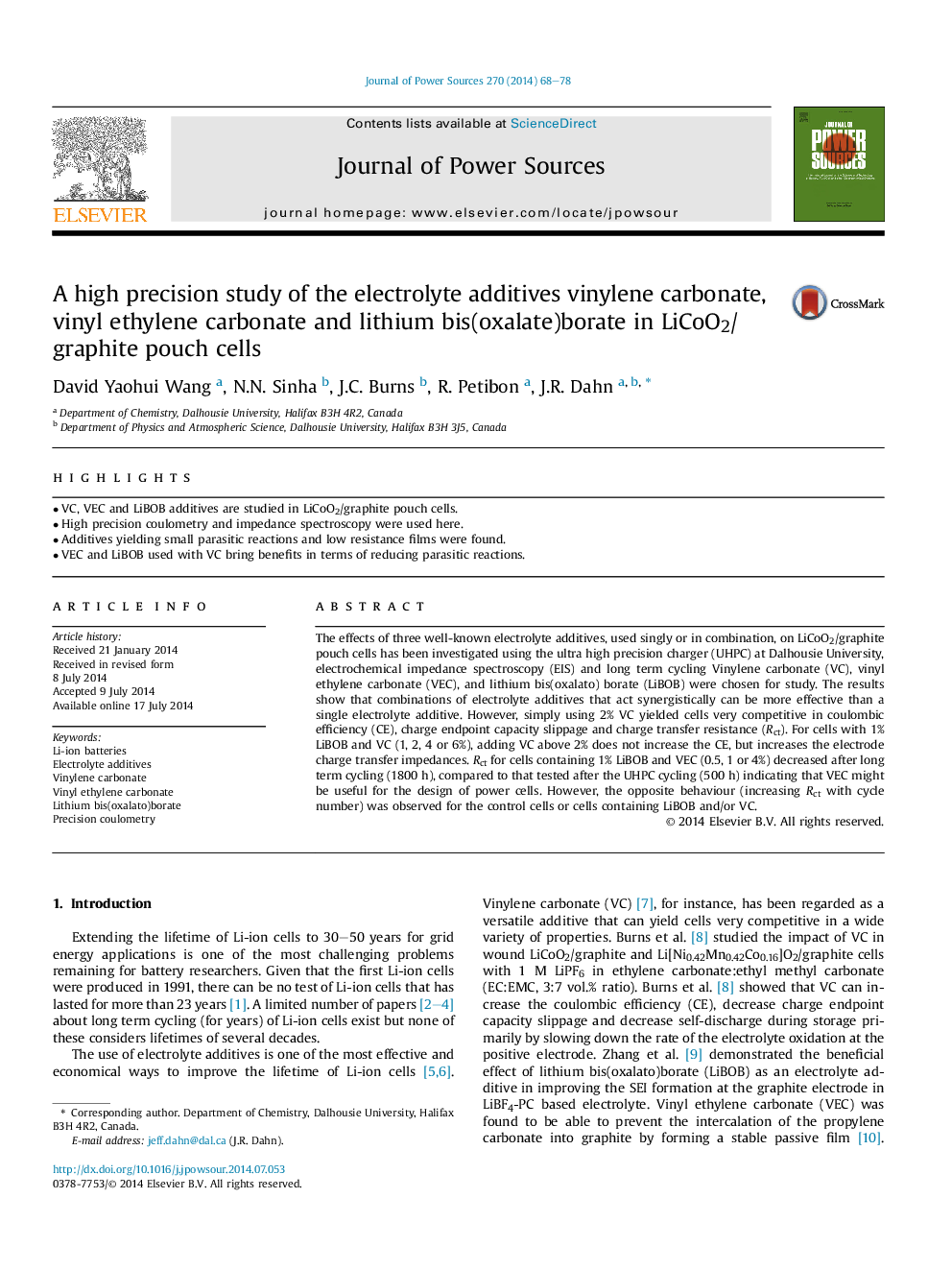| Article ID | Journal | Published Year | Pages | File Type |
|---|---|---|---|---|
| 7735699 | Journal of Power Sources | 2014 | 11 Pages |
Abstract
The effects of three well-known electrolyte additives, used singly or in combination, on LiCoO2/graphite pouch cells has been investigated using the ultra high precision charger (UHPC) at Dalhousie University, electrochemical impedance spectroscopy (EIS) and long term cycling Vinylene carbonate (VC), vinyl ethylene carbonate (VEC), and lithium bis(oxalato) borate (LiBOB) were chosen for study. The results show that combinations of electrolyte additives that act synergistically can be more effective than a single electrolyte additive. However, simply using 2% VC yielded cells very competitive in coulombic efficiency (CE), charge endpoint capacity slippage and charge transfer resistance (Rct). For cells with 1% LiBOB and VC (1, 2, 4 or 6%), adding VC above 2% does not increase the CE, but increases the electrode charge transfer impedances. Rct for cells containing 1% LiBOB and VEC (0.5, 1 or 4%) decreased after long term cycling (1800Â h), compared to that tested after the UHPC cycling (500Â h) indicating that VEC might be useful for the design of power cells. However, the opposite behaviour (increasing Rct with cycle number) was observed for the control cells or cells containing LiBOB and/or VC.
Keywords
Related Topics
Physical Sciences and Engineering
Chemistry
Electrochemistry
Authors
David Yaohui Wang, N.N. Sinha, J.C. Burns, R. Petibon, J.R. Dahn,
